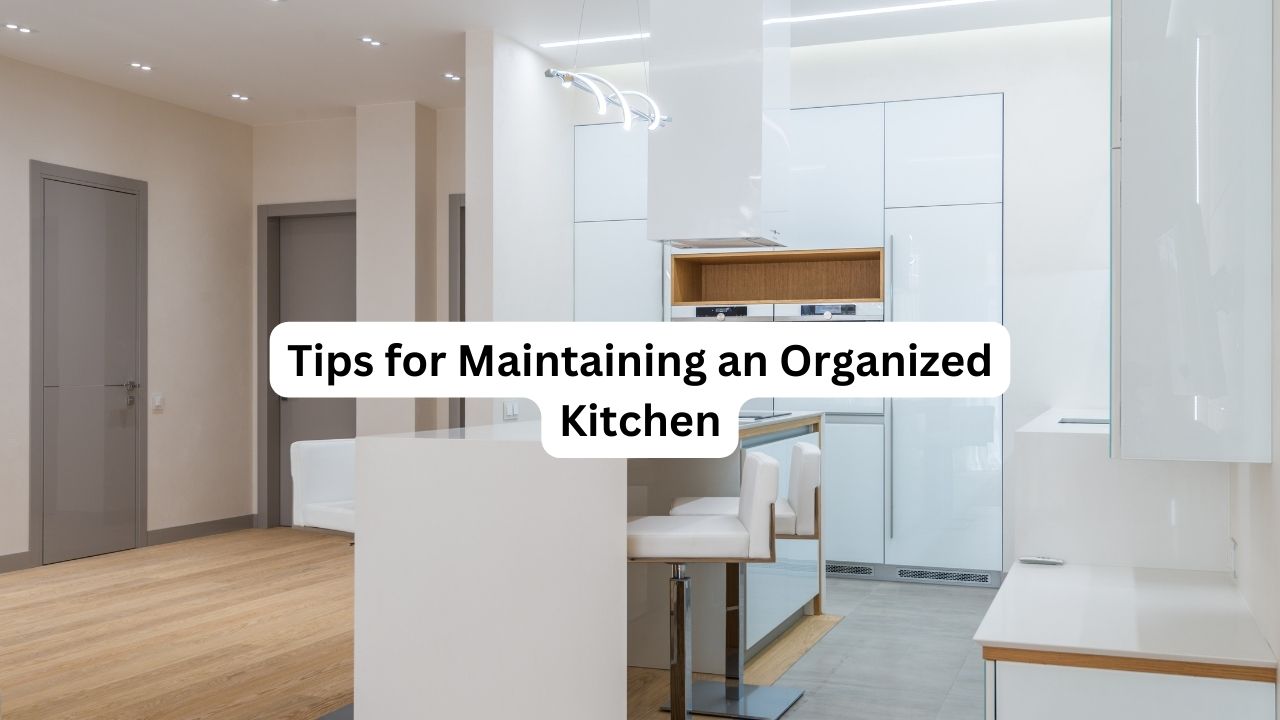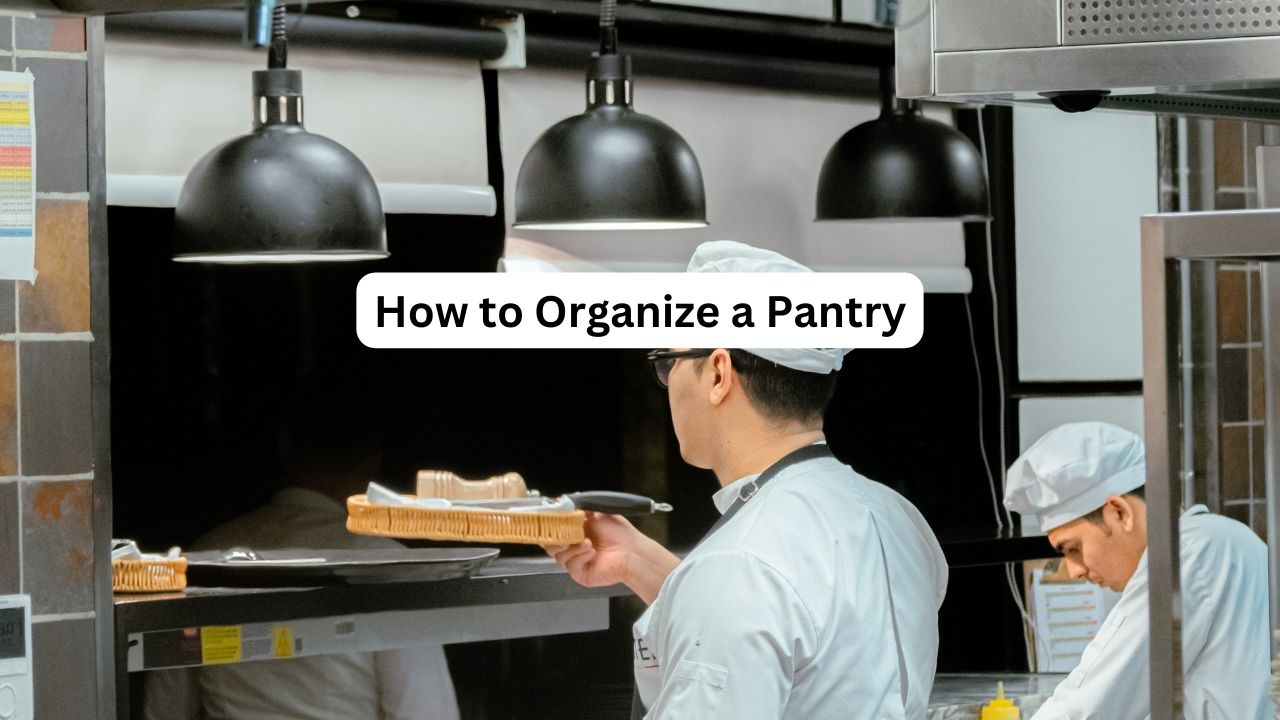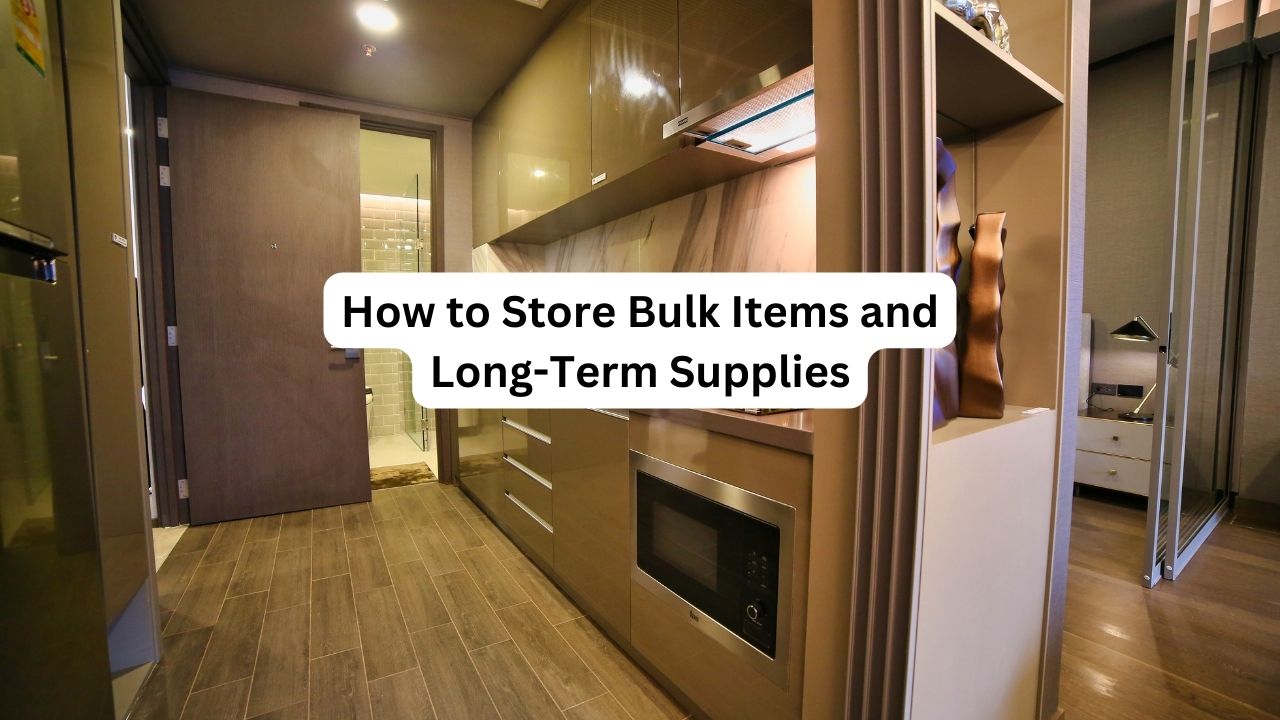A well-organized kitchen not only enhances your cooking experience but also makes it more enjoyable and efficient. With a clutter-free and orderly space, you can easily find ingredients and utensils, which saves time and reduces stress. Here are some practical tips to help you maintain an organized kitchen:
1. Declutter Regularly
Why Decluttering Matters
Decluttering is the first step toward an organized kitchen. It involves getting rid of items you no longer use or need. A clutter-free kitchen creates more space and makes it easier to keep things organized.
How to Declutter
- Assess Your Items: Go through your kitchen items and assess what you use regularly. Set aside items you haven’t used in the last six months.
- Donate or Discard: Donate usable items that you no longer need to local charities. Discard items that are broken or no longer functional.
- Set a Schedule: Make decluttering a regular activity. Dedicate a specific time each month to review and declutter your kitchen items.
2. Optimize Storage Space
Maximize Cabinet Space
- Use Shelf Risers: Shelf risers create additional space in cabinets by allowing you to stack items.
- Install Hooks: Install hooks on the inside of cabinet doors for hanging mugs, measuring spoons, or dish towels.
- Pull-Out Drawers: Consider installing pull-out drawers in cabinets for easier access to items at the back.
Utilize Vertical Space
- Wall-Mounted Racks: Use wall-mounted racks to store pots, pans, and utensils. This frees up cabinet space and keeps frequently used items within reach.
- Magnetic Strips: Install magnetic strips on walls or inside cabinets to hold knives and other metal utensils.
3. Categorize and Label
Group Similar Items Together
- By Function: Store items based on their function. For example, keep baking supplies, such as flour, sugar, and baking powder, in one area.
- By Frequency of Use: Place frequently used items in easily accessible locations, and store less frequently used items in higher or lower cabinets.
Label Everything
- Use Clear Containers: Store dry goods, like pasta, rice, and cereal, in clear containers. This makes it easy to see what you have and when you need to restock.
- Label Containers and Shelves: Use labels to identify the contents of containers and the designated spots for items on shelves. This helps everyone in the household know where things belong.
4. Maintain Cleanliness
Daily Cleaning Habits
- Clean as You Go: While cooking, clean up spills and put away ingredients as you use them. This prevents a large mess from accumulating.
- Wipe Down Surfaces: At the end of each day, wipe down countertops, stovetops, and sinks to keep them clean and free of bacteria.
Weekly Deep Cleaning
- Clean Appliances: Regularly clean appliances, such as the oven, microwave, and refrigerator, to keep them in good working condition.
- Empty and Clean Cabinets: Periodically empty cabinets, wipe them down, and reorganize the contents.
5. Use Organizational Tools
Drawer Organizers
- Utensil Trays: Use utensil trays to keep forks, knives, and spoons neatly separated.
- Adjustable Dividers: Adjustable dividers help keep larger utensils and tools organized in drawers.
Pantry Solutions
- Stackable Bins: Stackable bins make efficient use of pantry space and keep items like snacks and canned goods organized.
- Lazy Susans: Lazy Susans are perfect for storing spices, oils, and condiments. They allow you to easily access items without knocking over others.
6. Implement a System for Paper Clutter
Manage Recipes and Menus
- Digitalize Recipes: Use apps or online tools to store and organize your recipes digitally.
- Menu Planning Board: A menu planning board or a simple chalkboard can help you plan meals for the week and keep track of grocery lists.
Control Incoming Paper
- Designate a Paper Zone: Have a designated spot for incoming mail, flyers, and coupons. Sort through it regularly to avoid accumulation.
- Use a Filing System: Implement a filing system for important documents, such as appliance manuals and warranties, to keep them organized and easily accessible.
7. Involve the Whole Family
Create a Family-Friendly System
- Assign Tasks: Delegate kitchen tasks to family members. Even young children can help with simple tasks like setting the table or unloading the dishwasher.
- Make It Fun: Turn organizing into a fun family activity. Play music or set a timer for a quick 15-minute cleanup session.
Set Clear Expectations
- House Rules: Establish house rules for kitchen organization. For example, everyone should clean up after themselves and put items back in their designated spots.
- Regular Check-Ins: Hold regular family meetings to discuss what’s working and what needs improvement in the kitchen organization system.
8. Reevaluate and Adjust
Periodic Reviews
- Assess Your System: Periodically review your organization system to see if it’s still working for you. Make adjustments as needed.
- Stay Flexible: Be open to trying new organization methods or tools to improve efficiency and functionality.
Stay Informed
- Read Blogs and Magazines: Stay updated on the latest kitchen organization trends and tips by reading blogs and magazines.
- Join Online Communities: Join online communities or social media groups focused on home organization to share ideas and get inspiration.
Conclusion
Maintaining an organized kitchen is an ongoing process that requires regular effort and adjustment. By implementing these tips, you can create a functional and efficient kitchen that enhances your cooking experience. Remember, the key to an organized kitchen is consistency. Regularly declutter, clean, and reassess your organization system to ensure it continues to meet your needs.
FAQ: Tips for Maintaining an Organized Kitchen
1. How often should I declutter my kitchen?
It’s recommended to declutter your kitchen at least once every three to six months. Regular decluttering helps keep your kitchen organized and prevents the accumulation of unnecessary items.
2. What are some space-saving storage solutions for small kitchens?
For small kitchens, consider using vertical storage solutions like wall-mounted racks and magnetic strips. Shelf risers, pull-out drawers, and stackable bins can also help maximize cabinet and pantry space.
3. How can I keep my countertops clutter-free?
Keep countertops clutter-free by storing only essential items on them. Use organizers and storage solutions for utensils, spices, and small appliances. Regularly clean and put away items after use to maintain a tidy surface.
4. What’s the best way to organize a pantry?
Organize your pantry by grouping similar items together and using clear, labeled containers. Use stackable bins for snacks and canned goods, and consider adding a Lazy Susan for easy access to spices and condiments.
5. How can I get my family involved in maintaining kitchen organization?
Involve your family by assigning specific kitchen tasks to each member and making organizing a fun activity. Establish clear house rules for maintaining organization and hold regular check-ins to discuss improvements.
6. How do I manage paper clutter in the kitchen?
Manage paper clutter by designating a specific area for incoming mail and papers. Regularly sort through it and implement a filing system for important documents. Digitalize recipes and use a menu planning board for weekly meal planning.
7. What are some daily habits to keep the kitchen clean?
Develop daily habits such as cleaning as you go while cooking, wiping down surfaces at the end of the day, and putting items back in their designated spots. These habits help maintain a clean and organized kitchen.
8. How can I keep track of my kitchen inventory?
Keep track of your kitchen inventory by using clear containers for dry goods and labeling them. Regularly check and update your inventory list, and use apps or spreadsheets to manage your grocery shopping and pantry stock.
9. What should I do with items I don’t use often but still need?
Store items you don’t use often in higher or lower cabinets, or in storage areas like a pantry or garage. Keep frequently used items in easily accessible locations to avoid clutter.
10. How do I maintain organization in a busy household?
In a busy household, maintain organization by setting clear expectations, involving all family members in kitchen tasks, and creating a consistent routine for cleaning and organizing. Regularly reassess and adjust your organization system as needed.


